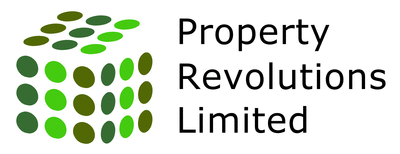Re-thinking our plastic usage
It is clear to us at PRL that the thinking on plastics needs to radically change. Plastics may be versatile materials, but the way we use them is totally wasteful.
Every year, millions of tonnes of plastic, worth billions, ends up being trashed, burned or leaked into the environment.
8 million tonnes of plastic leaks into the ocean every year, and that number is on the up. If we don't rethink, then by 2050 there will be more plastic in the ocean than fish (by weight).
So, is it really possible to rethink the way we design, use, and reuse plastics to create a plastic circular economy?
The use of plastics has increased 20x in the past 50 years.
Most plastic packaging is used only once, and only 14% is collected for recycling. 95% of the value of plastic packaging material, worth 80-120 billion annually, is lost to the economy.
Without radical redesign and innovation, about 30% of plastic packaging will never be reused or recycled.
The circular economy is an economic system in which materials are designed to be used - not used up.
From the outset, products and the systems they sit within should ensure that nothing is lost, no toxins are leaked, and the maximum use is achieved from every process, material, and component.
If applied in the correct way, the circular economy benefits everything around us.
We believe that all packaging should be designed to fit within a system, whether a reuse, recycling or composting system.
We need to see a change happen and a rethink on a global scale.
We need to focus on a drive towards changing waste into a valuable resource to replace fossil resources. So, instead of adding new carbon to the system, we can circulate the existing carbon, over and over again.
While it’s crucial to increase recycling rates significantly, it will be difficult to reach 100% - we do have an advantage on our side though... the natural carbon cycle on our planet allows us to tap renewable carbon sources to close the gap, and using bio-based carbon sources ensures no additional carbon is added to the circle.
The combination of renewable and recycled carbon will allow us to eventually turn our linear value chains into circular ones.
We have to be brave enough and rise up to the challenge that is combating plastic waste and climate change simultaneously. And, as you might have surmised, these are challenges that won’t go away overnight.
A sustainable circular economy: reduce, reuse, recycle – BUT HOW?
We need to be repairing and making things that last.
We need to hire items, rather than buying new all of the time.
And, we need to tax the polluters until they get the message. (The United States makes more plastic waste than any other in the world - enough every 15 hours to fill AT&T Stadium in Arlington. And, Texas is the top producer in the U.S. of chemicals used to make plastics.)
On certain projects, we at PRL, specify and use plastic rainwater goods/PVC windows as they are made from recycled plastics which can be reformed 10 times: i.e. virgin plastic - recycled many times is better than natural timbers and won materials from the ground.
Here is a very interesting article on recyclable plastic bags. (FACT: Americans use an average of 365 plastic bags per person per year. People in Denmark use an average of four plastic bags per year.4)
What are you doing about the Circular Economy? It's never too late to start the reduce, reuse, recycle lifestyle.
Carl Dodd, Property Revolutions Ltd.


